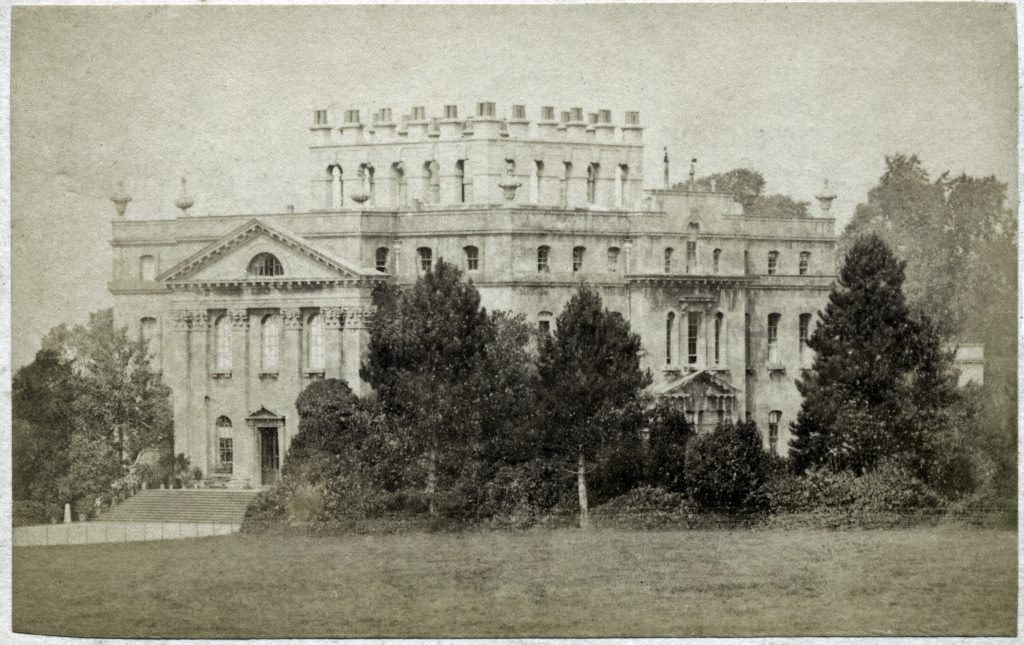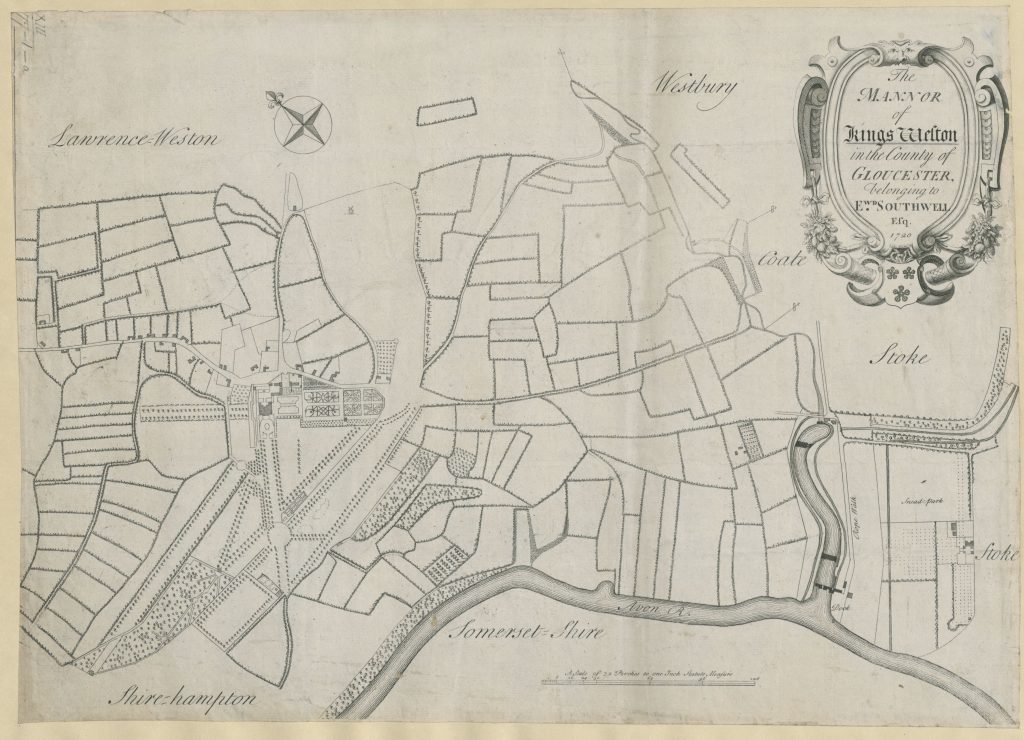The Miles family, who lived at Kings Weston for most of the 19th Century, were famously private, and the public were kept well away from the house, behind the parkland boundary. Photos of Kings Weston are, therefore, surprisingly rare for such an important historic building, especially from before the 20th Century. We’ve recently uncovered what’s considered to be the earliest photograph of the house, which we reproduce here. The scene seems little changed from today, looking across the lawns towards the building, with the evergreen border sheltering the garden front from the excesses of the wind, and as such it’s difficult to date. All we have to go on is the small size of the card, a “carte de visite”, and the name of the photographer, Maurice Batiste.

Batiste was a Frenchman who arrived in Bath in about 1871 where he set up business in Bladud’s Buildings. His career is little documented but for several court records where his temperamental mood appears to have got him into trouble on several occasions. By 1881 he’d moved on again, so we can be fairly certain his Kings Weston photo dates to the 1870s and, but the quality of the card, probably the earlier part of that decade.
The British Library has recently published a vast catalogue of topographical drawings and plans from the collections of George III. It’s probably unsurprising that amongst the collection there’s something of the famous Kings Weston estate represented. Of particular interest is a high quality copy of a notable estate plan of 1720. Bristol Archives also holds copies of this plan, but this is the first time one has been more publically available.
Although not identified by the British Library the tiny signature of W. Hallett appears in reverse in the cartouche, so we can attribute it to this otherwise unknown engraver. The 1720 plan is the first known measured survey of the estate, and shows in detail the house and parkland, immediately before Sir John Vanbrugh began erecting new garden buildings at The Echo, and rebuilt Penpole Lodge. The detail of the gardens, courtyards, radiating avenues, and formal layout of walks through Penpole Wood have been fundamental in understanding the landscaped grounds of the park during the early Georgian era, and the context of Vanbrugh’s Baroque house, before it was de-formalised later the same century.


